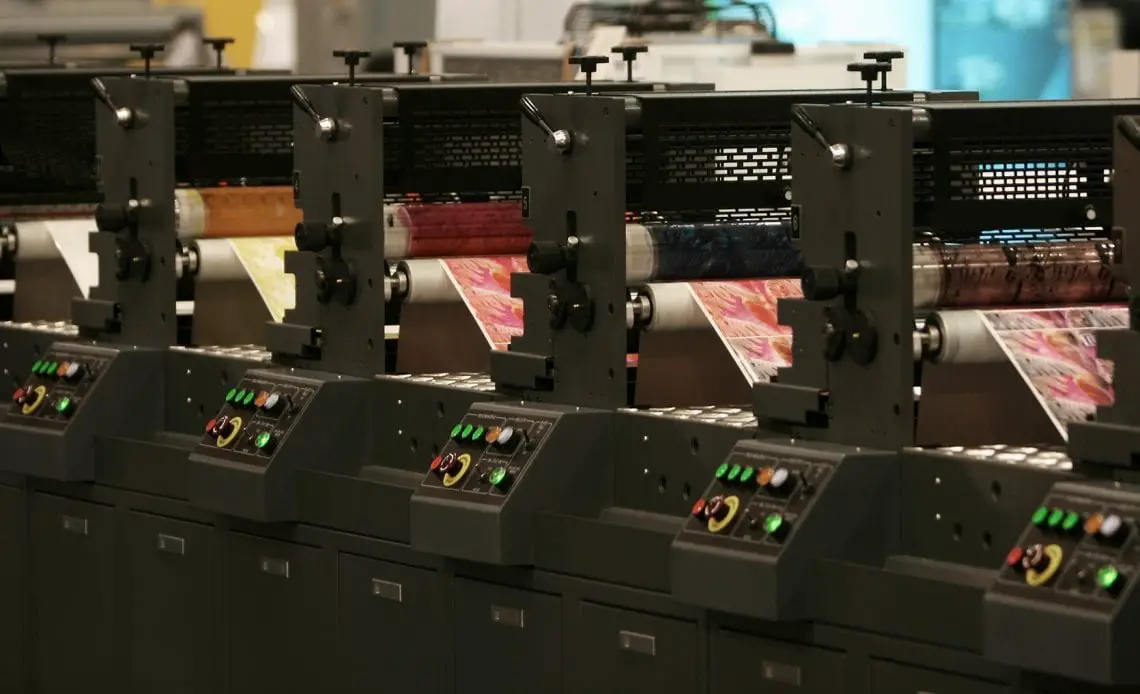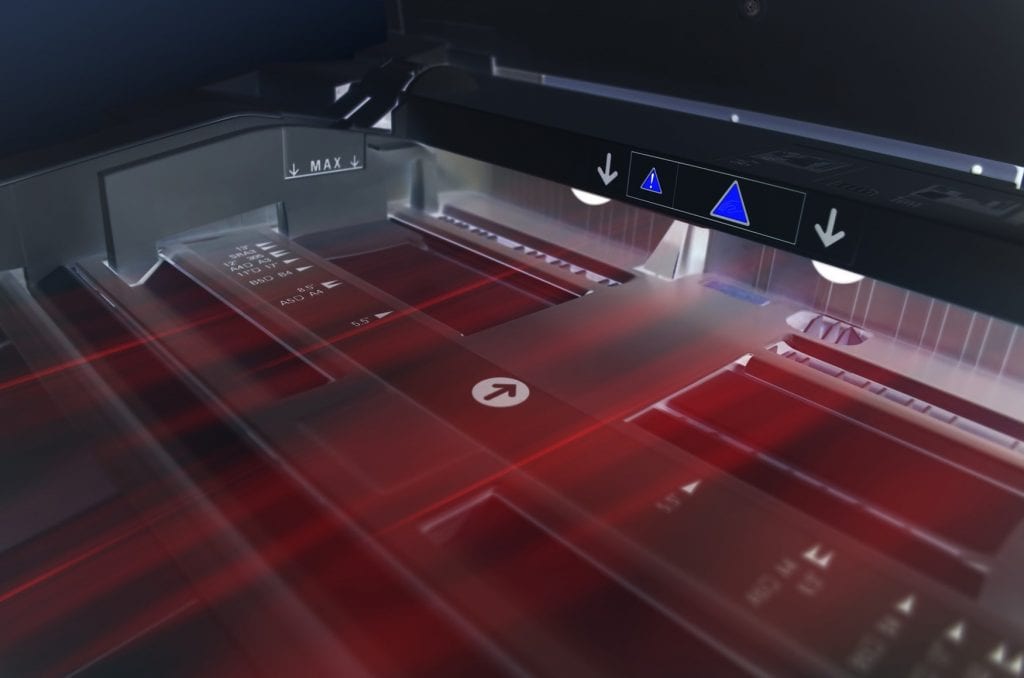
General Printing Techniques: An Overview.
Source: Pixabay
The printing industry is evolving, becoming faster & better in quality with time, with numerous types of printing methods at hand. With a variety of printing techniques, available businesses can choose the right process in highlighting their products or services. To begin with, let’s understand the various types of printing techniques & how each process differs from the other.
There are 7 common types of printing techniques where the 1st three mentioned process forms the traditional printmaking while the latter four form the new generation process, digital printmaking.
They are as given below with the description of their printing process:
Offset Printing or Lithography:
- This printing process is often used to print on rough-surfaced substrates such as paper, cloth, canvas, or even wood.
- Lithography is a versatile printing process & can be used for printing paper, books, stationery & many more related to publications.
- Offset lithography often used for mass production of printed materials involves aluminum printing plates carrying the image of the content meant to be printed. These plates are transferred into rubber blankets or offset rollers & then loaded into the printing machine.
- Since the printing plates do not directly contact the print media & transfer the print through rollers, it gives the plates an extended life.
- The offset plates can be used for mass production of printed materials & do not wear out or get damaged easily, making it an affordable printing process for mass production.
- Offset lithography can be used for printing even on substrates with rough surfaces & very consistent at re-producing high-quality images on any flat surface.
Flexo Printing or Flexography:
- This printing process is normally used in printing packaging materials or labels or anything with a continuous design similar to gift-wraps, wallpapers, etc.
- Easy to print on any uneven surface, the process of flexographic printing is considered to be the continuous version of letterpress printing.
- This process using semi-liquid, quick-drying inks is usually used in converting bulk jobs.
- The printing process involves wrapping flexible photopolymer printing plates on a rotating cylinder on a printing machine.
- The plates’ raised images with the content are inked, which helps transfer the image into the print media while rotating at high speed.
- Flexography is a process that helps in converting high-volume jobs & has the ability to print on a wide range of substrates such as metallic film, plastic & cellophane.
Screen Printing:
- This process is used in printing logos, business cards, graphics onto clothes or any attire, posters & fabric banners.
- In this process, the print image is transferred to a fine material or a mesh & exposed through a chemical process.
- The exposed mesh is stretched to create a screen of the image & ink is forced into it to transfer that image into the media.
- Quite a popular printing process & effective when printing graphics on to clothes & other fabrics, even metals but not very cost-effective.
Digital Printing:
- This form of printing process made its entry not long ago.
- This process is used in printing signage, posters, even newsletters, labels & menus, etc.
- Digital printing has different techniques of printing, which include laser & inkjet printing.
- In digital printing, the image to print is directly sent to the printer through a digital file such as a PDF.
- The requirement of a printing plate is eliminated in this process otherwise needed in processes like lithography etc.
- The turn-around time from job to job is very minimal in this process & allows businesses to print on demand even small-run jobs or to even a single print. Digital printing can be feasible depending on the type of job but not meant for high volume jobs.
Large Format or Signage/Billboard Printing:
- This process is used for printing on billboards, vinyl banners, posters, or on any kind of large signage.
- They are also used in printing murals, wallpapers, floor graphics, and even for lamination purposes.
- This process is perfect in creating huge signage for advertising medium as it’s meant to print the maximum roll width offered.
- This process helps print on bigger areas through rolls of print media fed continuously to the large format printing area or the head of the printer in producing one large printed sheet.
- Large format printing is the ideal printing process to create large print media for building wraps, murals, billboards & large banners.
3D Printing:
- This process is used in printing marketing freebies, promotional items, including novelty & display items along with toy figurines or ornamental dolls.
- 3D printing on three-dimensional objects has been around since the 1980s & hugely impacted the audience in terms of marketing.
- The object of the needed shape & size is created by using a CAD model or 3D models & constructed by fusing materials such as powder grains or liquid molecules in layers.
- Today 3D printing has become much more advanced & sophisticated, enabling printing even on items with interior moving parts.
LED UV Curing Printing:
- This process is nowadays widely used in printing leaflets, posters, newsletters, magazines, brochures & stationery, etc.
- This process of printing has become very popular & preferred by many businesses due to its swift turn-around time from job to job & extremely high-quality print.
- This is a process where printing ink with ultra-violet curing capability is used to print on the substrate.
- The process is quite similar to digital printing as ultra-violet lights are used to cure or dry the inks during the printing process.
- The curing or the drying process is so fast that the perfect tone of the print color is observed without the ink sinking into the substrate.
- The long wait for the ink to dry or to run the rotary machine at a slower speed hampers production.
- In UV printing process, the production is faster with the colors coming out clearer & the print, sharper.
- The LED UV process can be run on normal machines with some modifications & eco-friendly, easily viable to print on mostly all substrates.
Another process worth a mention is Rotogravure Printing very much favored earlier due to its high productivity & excellent printing quality. This process involving engraving the image into a print carrier, a copper engraved rotary cylinder, has been slowly disappearing due to high production costs & waste.
Traditional Printing vs Digital Printing: Advantages & Disadvantages.
There are different printing methods & the right process has to be chosen when finalizing a print design.
While selecting the process, the quality, budget, timeline & the desired volume of the print design should also be considered before finalizing.
Commercially two main forms of the printing process are the traditional offset printing & digital printing, both with their share of advantages & disadvantages.
Let us analyze that:
Advantages & Disadvantages of Digital Printing:

Source: Pixabay
Advantages:
· Digital printing is very fast, making it the ideal process to take on projects with a strict timeline or for printing ID cards or something similar.
· Traditional offset is time-consuming when compared to digital printing, so, the strict timeline should be importantly considered when deciding on the process.
· Digital printing would be the clear choice for jobs with a strict timeline.
· Budgeting along with the required volume also plays an important role in selecting the process.
· Digital printing is more cost-effective than traditional offset printing for a typical low volume print job.
· Digital prints are quite accurate & can come out with extremely detailed print jobs quite quickly & economically.
Disadvantages:
· Digital prints lack in color strength when compared to traditional offset prints.
· In traditional offset printing, the color quality of the print is excellent as the colors are matched as per Pantone Matching System resulting in the ink delivering the accurate required shade.
· Traditional offset also offers a wider range of options in ink, paper & finish, unlike digital printing.
· Digital printing system uses four shades of process colors in simulating the required color while traditional offset uses direct colors resulting in a clear & rich prints in color.
· Digital color printing inks do not get fully absorbed by the paper leading to cracks in the color print near the edges. In traditional offset, print does not face this problem.
· For big volumes of a print job, traditional offset printing would be cost-effective when compared to a digital print job.
Advantages & Disadvantages of Traditional Offset Printing:
Advantages:
· The image quality of a print job in traditional offset is far superior & preferred by graphic designers when compared to the image quality of a digital print job.
· Today the traditional offset printing machines are far superior to the earlier machines, computer-driven to deliver print accuracy & excellent print quality.
· Graphic designers have more choices in print material while using the traditional offset process & get to use different quality of paper, specialized inks with varied finishes.
· The traditional offset process has the advantage of obtaining excellent special effects on the print job with varnishing, unlike the digital process.
· The Pantone Matching System & Pantone ink available in the traditional offset process makes it the best choice when color accuracy of the print job is very important.
· The four process colors used in digital printing does not stand out from the traditional offset process, so for a color count in a print job, the traditional offset is preferred.
· Traditional offset printing is a much faster & cheaper printing process when it comes to print graphic designs in large volumes.
Disadvantages:
· The traditional offset printing process cannot be personalized & customized with any print jobs as each time the machine has to be adjusted in favoring the required print job.
· This becomes time-consuming as in called turn-around time while changing over from one job to another.
· Digital printing can be customized, and job shifts hardly take much time.
· Digital printing is an effective process, especially for quick & cost-effective low volume print jobs.
To Summarize:
The type of printing process to be used will depend on the required quality, demanded volume, budget & timeline of the print job.
Both forms of printing are quite effective in their respective process, depending on the print job requirements.

